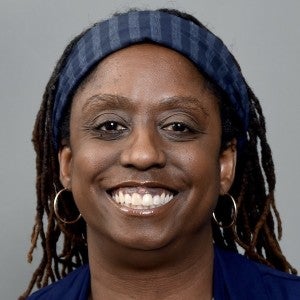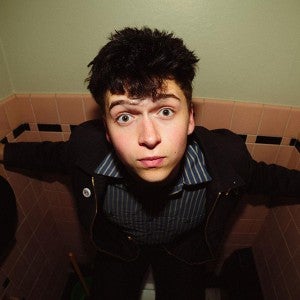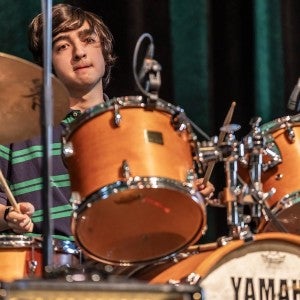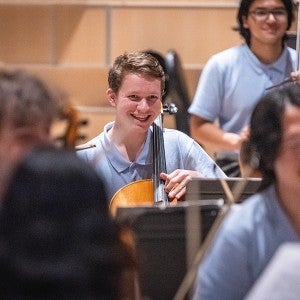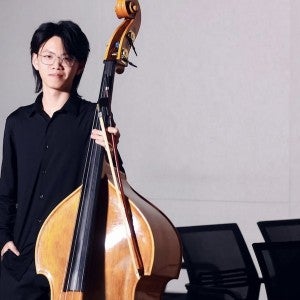Coming back and paying it forward
A conversation with Detroit Symphony Orchestra cellists and Interlochen alumni Paul Wingert and Úna O'Riordan.

Detroit Symphony Orchestra cellists and Interlochen alumni Paul Wingert and Úna O'Riordan.
Cellists Paul Wingert (AS 72, IAC/NMC 73-75) and Úna O'Riordan (IAC 92-94) met during a masterclass Wingert helped lead as part of the Detroit Symphony Orchestra’s (DSO) 1993 residency at Interlochen Arts Camp.
O’Riordan recalls that side-by-side with the DSO as a student as a defining moment, and credits her time at Interlochen as one of the reasons she decided to become a professional musician.
“The immersive atmosphere in the arts was unlike anything I had experienced before, and I felt like I was in my element,” O’Riordan said. She was so much in her element, that O’Riordan sat principal cellist of the World Youth Symphony Orchestra (WYSO).
Wingert’s own experience at Interlochen was just as impactful—soaking up his time in northern Michigan and even winning the 1974 concerto competition.
Now as professional musicians, they work together as cellists in the DSO. During the DSO’s summer 2019 residency, we caught up with O’Riordan and Wingert to learn more about their first meeting, being back at Interlochen, and inspiring the next generation of cellists.
Have you been back to Interlochen often?
O’Riordan: Last summer, I was in the area so I came to campus and got a tour, but before that, the last time I was here was in 2005 when I was still subbing with the Detroit Symphony Orchestra. When I came in 2005, I hadn’t been here since 1994. So, I have not been back much, but when you get here, you feel like you’ve never left, in a way.
Wingert: There’s not a lot that’s changed, except that old wooden benches in the Interlochen Bowl are gone.
O’Riordan: And the landscaping is a lot better.
Have you had a chance to work with any students yet?
O’Riordan: I was able to do a side-by-side with the celli yesterday, and it was great! I walked back to the Bowl with one student who had so many questions about everything. It was great. We talked for 20 or 30 minutes about all these cello-related things.
Wingert: I did it last time we were here—the side-by-side. There are so many cellos, and there’s only so much room. So maybe I’ll rotate in and teach the next time we’re here.
When did you two meet?
Wingert: I came with the Detroit Symphony Orchestra in 1993. That would have been your second summer here at a student, right?
O’Riordan: Yeah. That was the summer that I was working on the Dvořák Cello Concerto. It was the summer that Yo-Yo Ma was coming to play with the World Youth Symphony Orchestra, and Music Director Henry Charles Smith asked me, “Will you be the warm up cellist for Yo-Yo Ma?” So, that summer was all about that piece for me. Dvořák is like the Bible for cellists. It’s like, holy for cellists. It’s not the most complicated piece, but it’s a massive piece.
What does it mean to be back?
O’Riordan: For me there’s a couple layers to it, because obviously, it’s great to be playing in a section here with Paul where I first met him. The piece that we’re playing on, Rachmaninoff’s Symphonic Dances, was the very first piece that I played when I was first asked–at the very last minute—to sub with the DSO on their 2001 tour. So, I landed in Dublin at the beginning of the tour with the orchestra and we played Symphonic Dances.
I’ve also just finished a sabbatical. So, this is my first week back at work, and I chose it specifically because I heard we were coming to Interlochen. I really wanted to come back, because this is kind of where it all started, and this piece is where my relationship with the DSO started.
Wingert: One of the really cool things about reigniting this relationship is that I remember when I was a camper here, the DSO came up. I still remember hearing this stunning performance, and thinking, “That’s what I aspire to be.” Just a few years later, I would be living my dream. So, we’re just part of the chain. We’re still working with students.
O’Riordan: Hopefully, we’ll inspire a few students to do the same.
A full recording of the Detroit Symphony Orchestra’s July 27, 2019 performance from Kresge Auditorium can be found online via Interlochen Public Radio.

